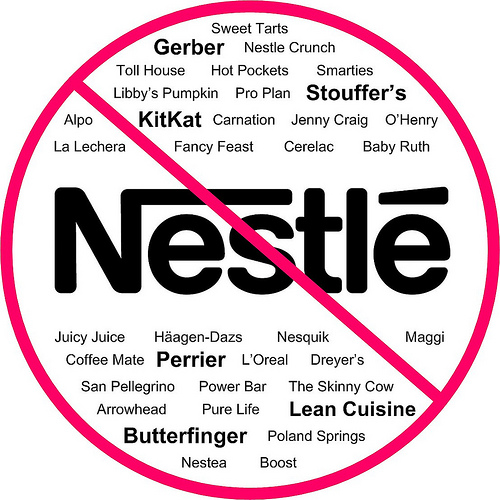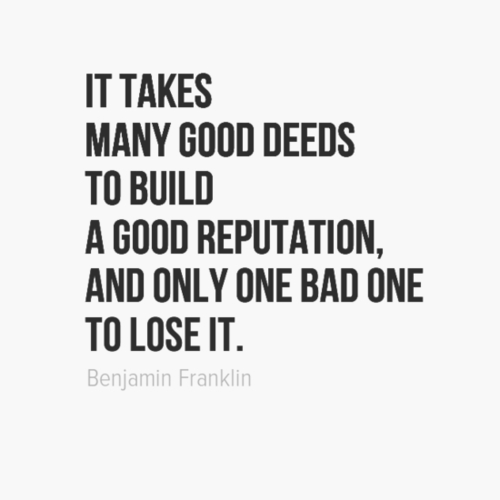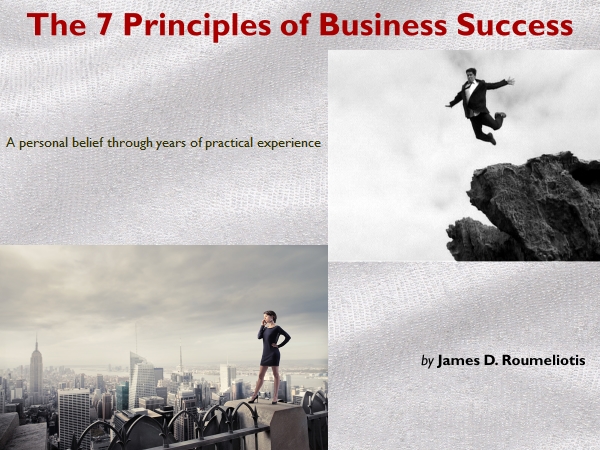By James D. Roumeliotis













When you are the top executive of a corporation, you are supposedly quite conscious of your business activities. You are also the chief strategic planner and implementer. The path you take the company through can be one the consumer and public in large will either admire and respect or despise and hold in contempt. Good news! A business can do good for the consumer and the ecological footprint while growing the business and increasing profits methodically. A savvy businessperson and executive know how to do this. A disgraceful and incompetent one either has no clue, does not care, or both.
Small to medium sized businesses owned by a person or a family, often since decades, keep seriously in consideration their business and its reputation as their personal honor. They think long term. Unfortunately, at many big companies, such as publicly traded automobile manufacturers, emphasis is mainly on satisfying shareholders through quarterly share prices…whether organically or artificially. Most of the time it’s the latter growth. That’s tremendous pressure on everyone at the helm.
Despicable companies: Prime examples that make you cringe
- The Boeing brand reputation bruise following its sprint to launch the 737 Max 8 & 9 commercial passenger jets despite its safety and design flaws.
Following two air fatalities in a short period of time along with constant denials and lack of responsibility by Boeing, the aircraft manufacturer with pedigree finally admitted its shortcomings of its newest passenger jet. The company should have known better. They rushed to launch the 737 Max due to competitive pressures. Armchair public people think it was a software problem. It was beyond that. It is a structural problem that affects flight dynamics. Both the center of gravity and the mass moment of inertia (in engineering lingo) are too far forward. This causes the nose to dive. The MCAS is just a make-shift for the problem. A single reliable measurement and display of Angle of Attack (AOA) sensor rather than typically two was an additional negligence on the part of the design. Last but not least, the lack of training and written Airplane Flight Manual (AFM) instructions, along with an unproven useless hazardous algorithm, compounded the risks.
This pragmatic author’s take on this one is; Boycott this jet indefinitely. First and foremost for your safety and second, to make a bold statement that the way the whole matter was handled is despicable for the brand whose paramount responsibility is passenger and crew safety.
Unfortunately, many organizations fall victim to ineptness that Boeing did.
- Why do you think a company which hires and contracts missionaries changed its name from Blackwater to XE, and then Academi? According to source Wikipedia, “Academi is an American private military company founded in 1997 by former Navy SEAL officer Erik Prince as Blackwater, renamed as Xe Services in 2009 and now known as Academi since 2011 after the company was acquired by a group of private investors. The company received widespread notoriety in 2007, when a group of its employees were convicted of killing 14 Iraqi civilians in Nisour Square, Baghdad for which four guards were convicted in a U.S. court.” Quite the business to aspire to operating. Imagine the amount of exposure to liabilities. How well does Erik Prince, its founder and strategist sleep at night? Not caring a whit as long as he is increasing his wealth, that’s what matters to a sociopath.
- Monsanto, the company everyone loves to hate (except for its enablers). For some decades, the crop chemical company produced and profited from the chemicals that caused destruction, wiping out millions of species by spreading poisonous agrichemicals, destroying our fragile ecosystems, poisoning our soils and entire web of life, undermining every aspect of our lives for financial profit. It also made users vulnerable to the lethal cancerous ingredients. Monsanto is better known as the company which introduced the GMO on your plate, as well as for the popular weed killer herbicide The Monsanto Bayer merger is a great brand strategy for Monsanto. Destructive conglomerates marry each other. However, “Bayer [does] significantly better public-relations work than Monsanto, but that’s it,” contends Antonius Michelmann, CEO of the Coalition against BAYER-Dangers. “Both, Monsanto and Bayer are poisoning and immediately endangering animals, plants and human life. Both care just about profits and nothing else.” Much said!
- Johnson & Johnson (J&J), the drug giant, known for its baby products, was accused of deceptive marketing conspiracy, by the State of Oklahoma, to drive up sales of its powerful opioid Duragesic painkillers. The state is claiming that J&J worked to aggressively promote opioids to people who did not need the drugs so as to compete with Purdue Pharma. J&J deliberately ignored warnings about addiction and death.
According to Anti-Media, a non-partisan, anti-establishment news publisher and crowd-curated media aggregator, compiled a list with the 10 worst food companies, with genetically modified faux food. The top five (quoted from the source) are:
#1 ConAgra: Their family of brands include Hunt’s, Marie Callender’s, Orville Redenbacher and many others. The compony was found guilty of “health code violations and bacterial contaminations at its food processing facilities, which have endangered consumers and in some cases been linked to deaths.” They’ve also concealed the use of GMOs in their products and practice unethical factory-farm sourcing.
#2 General Mills: Trisodium Phosphate (also known as TSP) is an additive and flavor enhancer found in thousands of frozen and processed foods, including kids’ cereals. It also happens to be an ingredient that was used in industrial cleaners
#3 Kraft Foods: Their Mac N’ Cheese has a golden looking tone to it thanks to the artificial coloring agent Yellow No. 6 which it uses. However, it has been linked to hyperactivity, asthma, skin conditions and unsurprisingly even cancer. In 2013, following intense pressure, the toxic food company finally removed the artificial coloring. Kraft also hides the presence of GMOs in their foods
#4 Heinz: It merged with Kraft Foods in 2013 (bought by Warren Buffett’s Berkshire Hathaway and the private equity firm 3G Capital). Both brands instantly became partners in food crime for the sake of cost cutting and higher profits yet at the health detriment of their customers at the kitchen table. What Brazilian 3G Capital has purchased (past and present), it turned into disasters with its aggressive at-any-cost cutting. Speaks volumes of the people pulling the reins at the very top. It doesn’t take a psychotropic individual or anyone with an MBA to simply cost cut to increase profit. Anyone can do that. However, it take a contriver with humility and with a long-term view to increase sales and profit more cleverly.
#5 Campbell’s Soup Company: The brand has been sued for hiding the presence of GMOs and for labeling foods as low-sodium when they contain as much salt as regular products. The average cup of Campbell’s soup contains a staggering 850mg of sodium. Unless that’s your only major meal of the day, consuming it means you’re risking heart attacks, diabetes and high blood pressure. Just as importantly, if not more so, is the fact that for many decades, Campbell’s has lined its epoxy-resin cans with the toxic chemical, bisphenol A (BPA). “BPA has been linked in lab studies to breast and prostate cancer, infertility, early puberty in girls, type-2 diabetes, obesity, and attention deficit hyperactivity disorder,” according to Breastcancerfund.org. Only recently did the company finally bow to pressure and phase BPA out of its production.
Other repulsive processed food and beverage culprits on the list (in chronological order), which shouldn’t be raising any eyebrows, include Coca Cola, Nestlé, Kellogg’s, PepsiCo and Hershey’s.
The only method the above brands are responding to their sliding market share, revenues and much more is by utilizing their available cash to purchase health food and functional beverage young companies. These ships are too big to change course despite their plethora of resources.
Seems it is a prerequisite for success that an established food company ought to actively lie to their customers to retain and perhaps grow their business. That worked in the short term.
Here is something off the beaten path compared to the above businesses but with a huge eye sore in terms of their business practices. True story. An American tourist from NY, during his stay on a popular seaside oyster bar on the Greek island of Mykonos in May 2019, paid 836 Euros (about 938 USD) for Calamari (fried squid), a bottled waters, and a couple of beers. Following this outcome, the tourist trap had a slew of complaints and dreadful reviews on Tripadvisor.
Read at this link: https://www.tripadvisor.com/ShowUserReviews-g659660-d129913…
However, the unmoved owner justified his reasons with audacity. The business will surely not remain open for much longer, thanks to short-sightedness. At this day and age…most notably due to the powerful influence of social media, this business practice will not survive for too long.
How to focus on conscious leadership
Typically, private and family remodeling business in various industries put their name on and behind the business. With privately held companies, they are in no pressure to dumb down the products to calm down investor impatience. Instead, companies such as British company Dyson with its dynamic team of engineers do what companies, private or public, should always be doing: innovating with practical new products and refining existing ones.
It is very common in popular culture to see business owners as greedy, selfish, revenues and profit at any cost with no regard for employees or customers. However, this usually applies to public companies who simply bow to their shareholder expectations. A business should be viewed as a sacred obligation to employees, customers, suppliers and everyone who is directly or indirectly impacted the business and its executives. The internal culture is one which ensures the customers are given superb value and great customer service, and by going to great lengths to ensure employees are well taken care of. In addition, treating all vendors, suppliers, service companies, etc. with respect. While our business directly impacts the lives of several hundred people it indirectly impacts the livelihood of several thousand. Therefore, it is critical that high standards are maintained as the cost of negligence or failure is too high. Money can be earned doing things with conscience…it may take longer but the impact will remain positive and sustainable.
Sadly, the fabric of today’s corporate world is dominated by considerations on shareholder returns at the detriment to innovation, goodwill, reputation, customer service and quality products. The conscious captains of industries are the heroes. Few and far between.












____________________________________________________
Request your TWO FREE chapters of this popular book with no obligation.




















































